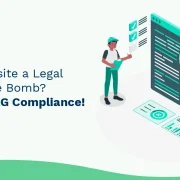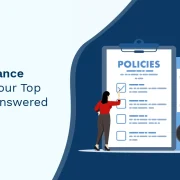
Higher Education Challenges in the New Normal
The proponents of online learning consider the present era the best time for higher education. The proliferation of cutting-edge technologies like Artificial Intelligence, Augmented Reality, Virtual Reality, Machine Learning, and whatnot have made it relatively easy to deliver quality education.
Presently, the time and place of the content delivery do not matter since learners can access the content anytime, anywhere. The availability of educational content delivery platforms has made higher education more impactful. Higher education institutions have been creating lessons with audio, video, AI, AR, VR, etc., to train and evaluate learners conveniently. These technological advances have hooked students to their coursework and increased the reach of quality education.
Although post-pandemic higher education presents a plethora of information to learners that was largely inaccessible earlier, it also poses a severe challenge to educational institutions.
Be it the demand for life-long learning, the changing learner expectations, fast-changing technologies, or the threat of cyberattacks, the challenges weigh heavily on the dissemination of post-pandemic online-based higher education.
The following sections identify the top challenges that higher education institutions face to prepare you to handle them better and make your institution future-ready.
Table of Contents:
- Increasing Need for Life-Long Learning
- The Evolving Expectations of Students
- Emerging Technologies and Learning Models
- Concerns Regarding Cyberattacks
Top 4 Challenges for Higher Education Institutions
-
Increasing Need for Life-Long Learning
We live in a non-linear world where technologies are changing faster than the higher education curriculum. With digitization becoming a norm rather than an exception, learners need to adjust themselves to the expectations of the industry. The faster we prepare ourselves for hybrid work culture, the better it will be for us. Not only professionals but companies also recognize the benefits of hybrid work culture.
A study conducted on over 30,000 US employees found that employees’ productivity increases by 4.8% if they spend at least one day every week working from home. This is because they save a lot of time otherwise wasted on commuting.
So, one of the top higher education challenges is the renewed clamor for lifelong learning. Post-pandemic higher education needs to change its traditional mindset where learners acquire skills, degrees, and certificates early in life and get ready to work for a lifetime. There are many advantages of life-long learning for the younger generations.
However, this is easier said than done. Higher education typically follows a structured model, and the syllabus passes through multiple rounds of approval before reaching the learners. Moreover, designing text and reference books take time. Additionally, the unavailability of content designers compounds the problem further. Hence, making content that is forever new is difficult, if not impossible.
So, while redesigning the core content of higher education is almost an impossibility, education planners can certainly design small modules of future-ready courses and impart them to students through online platforms and make lifelong learning easy since you can design content based on the changing societal and technological needs and enable learners to adapt better. Such bite-sized courses increase learners’ motivation levels with attractive videos, animations, and AI-enabled simulations and holistically engage them.
-
The Evolving Expectations of Students
It’s a fact that modern-day students have become more intelligent than before. Thanks to the Internet, students have now become the primary decision-makers on matters concerning them. With digital devices such as smartphones and laptops becoming more penetrative, they can find all information at their fingertips and capably control the decisions affecting their lives. Hence, higher education needs to cater to the changing needs and evolving expectations of students.
The students of today understand that one-size-fits-all education will not do them any good, and they demand personalized learning paths. They want educational institutions to identify their unique talents and harness them. So, instead of learning anything and everything, they need access to targeted content that helps them understand the bigger picture. Besides providing learners with future-ready courses, it is crucial to offer them a personalized learning experience.
Therefore, one of the most significant higher education challenges is to understand the changing preferences of modern-day learners and take steps to ensure that the courses are relevant to each learner.
-
Emerging Technologies and Learning Models
Emerging technologies are one of the top higher education challenges in present times. As already mentioned in the first point, technology has been changing more quickly than the curriculum. Education is rarely as competitive or adaptive as other business sectors.
However, things are changing slowly but steadily. As lifelong learning becomes more pervasive, curriculum designers are waking up to the realities of modern education and making employment-ready courses a part of the core curriculum. For example, in Indian engineering degree institutions, MOOCs (Massive Open Online Courses) have become a mandatory feature for all courses. Top information technology firms like Google and Microsoft are creating courses of the future and partnering with higher education institutions to make their processes more advanced.
Hence, traditional higher education institutions are facing a stupendous task to make their institutions as agile and adaptable as the best institutions in the category.
-
Concerns Regarding Cyberattacks
Cyberattacks figure prominently as a higher education challenge for obvious reasons. Research shows that in 2020, downtime and repair costs due to ransomware attacks on educational institutions have touched the US$2.73 million mark. In fact, educational institutions faced more than 5.8 million malware attacks between August 14 and September 12, 2021.
A major reason for cyberattacks is the use of unsafe devices with redundant security software. Moreover, institutions moving onto online platforms recently might not have the necessary resources or trained staff to handle the cybersecurity division.
If you plan to take your higher education institution to the next level and make it future-ready, investing in cybersecurity is the first step. You could either purchase a licensed version of malware protection software or rope in one or more cybersecurity experts to make your system foolproof.
Conclusion
There are far too many higher education challenges to face in the new normal. However, nothing can deter you from achieving excellence if you have the right approach and the know-how to succeed.
Embracing digital technology can help you overcome these challenges. Technology has made it easy to deliver highly interactive learning experiences to students and also ensure complete content security.

Senior Vice President
A Business Development professional with >20 years of experience with strong capability to sell new solutions and develop new markets from scratch. New Market Entry Specialist with experience working in the largest emerging markets. Exceptional experience in conceptualizing, ideating and selling new learning technologies like VR AR, etc. across multiple industry verticals.




